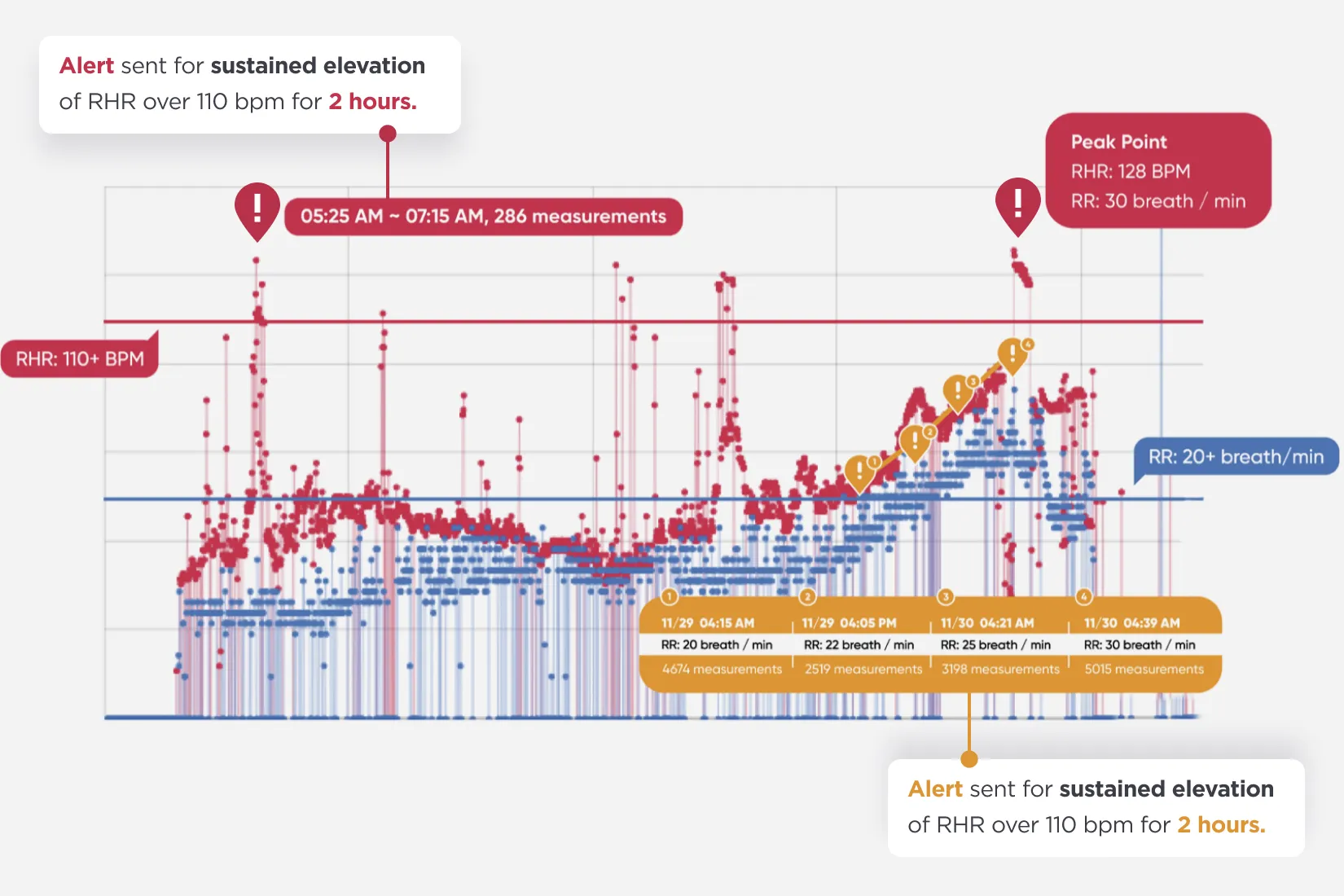XK300 Sensor
Precise Vital Signs Monitoring Powered by Radar Technology
The body is always communicating. Do your care teams have the tools they need to listen?
Studies show that changes in vital signs like heart and respiratory rate can help predict serious health events 6-8 hours before they occur. Continuous monitoring can help — but traditional approaches are often hindered by low resident compliance and overburdened clinical staff. There’s a better way. Explore how radar-based monitoring of vital signs, motion and presence can address common long-term care challenges to help you improve resident care, staff satisfaction and your bottom line.
Reduce ED transfers, decrease hospital readmissions and improve length of stay with early detection of deterioration.
Tap into the incremental support your residents need with Medicare reimbursements for remote physiological monitoring.
Reduce work pressures so staff can focus on what they value most — direct resident care.

In a recent pilot, contact-free, continuous monitoring predicted deterioration five days before hospitalization.
85-90% of residents in skilled nursing facilities may have a chronic condition qualifying for Medicare remote physiological monitoring (RPM) reimbursement.2,3 By working with RPM providers, many facilities can offer continuous vital signs monitoring for little or no cost.
The XK300 uses radar monitoring to track heart rate, respiratory rate, motion and presence. In fact, it is the first commercially available medical device cleared by the FDA to do so. Our radar can sense through blankets, clothing, furniture and even drywall to detect micro vibrations from the body — safely. Discover how it can make a difference for your residents and staff.
Did you know 70-80% of patients have elevated or depressed vital scores six hours before an event?1 Radar-based, continuous monitoring can capture thousands of measurements each day, helping you:
According to the American Health Care Association, nursing homes lost 210K jobs throughout the Covid-19 pandemic — more than a 13% workforce reduction.4 With staffing shortages and burnout running rampant, your clinicians need support. Reduce work pressures so your staff can focus their efforts where they value it most — providing direct resident care.